
Nematodes and crops: 7 results with BioAksxter®
Nematodes in crops: here is another adversity that challenges the ability of farmers to maintain farm yields. They manifest themselves through the appearance of small whitish lumps (galls) around 1-2 mm in size on certain roots which can grow to up to 2 or more centimetres and spread to the whole of the root structure, stopping it from absorbing nutrients.
The plant’s growth, development and self-defences are reduced, depleting the weight and quality of the harvest; in many cases the plant completely dries out.
This process begins to manifest itself in a few places on the crop, then these clusters spread. The whole process takes place over a period of time which can range from several weeks to a few days. It depends on a number of factors, including the composition of the soil, the ability of the crop varieties to resist the disease, the cultivation techniques and the weather conditions.
Nematodes in crops: how to combat them, what solutions are available?
Although numerous techniques have been used down the years to deal with the issue (use of resistant rootstocks, fumigants or nematicides, solarization, crop rotation, green manuring, selection of resistant varieties, antagonistic microorganisms, etc.), we can confirm that the fight against nematodes cannot be won without de-pollution and regeneration of the land.
Indeed, nematodes are not simply parasites which live in the soil and attack the plant’s underground organs, rather they are a symptom of the ecological status of:
- exploited land (tired land)
- polluted land (e.g. from crop treatments, water used in irrigation or rainwater, from production waste)
- contaminated land (e.g. from toxic, harmful or unsuitable substances, from other harmful microorganisms, such as mushrooms, bacteria, viruses).
Conditions which transform these plant parasites from assets in the decomposition process into predators.
You just have to consider the use of chloropicrin, a substance used for military purposes during World War I and currently applied as a fumigant in agriculture, or Abamectin, a toxic substance authorised as a nematicide. But that’s not all…
This is why BioAksxter®, the de-polluting fertilizer, has been so vitally important, thanks to the way it rebalances the plant-soil system and, moreover, it is much more beneficial in both sustainability and financial terms.
1° Case History: Nematodes in soil used for growing tomatoes, lettuce and cucumbers
The farm S.R.E. in Vallese di Oppeano, near Verona, has used BioAksxter® on its crops grown in sandy soils where there are three transplanting cycles per year. The issue of nematodes had arisen in the early years of cultivation and despite regular fumigation, the number of nematodes had reached 800 units per cm3. The decline in yields had become uncontrollable. After 8 years, tomato production had reached historic lows, with a harvest of just 4 boxes, equivalent to 25 tonnes per hectare.
Following the introduction of BioAksxter®, a greater resistance to nematodes was observed and there was a reduction in the development of galls on the roots. By treating the whole of the farm land with BioAksxter®, the problem of nematodes was solved, giving crops that were sound in terms of vegetation and yield throughout the cycle. Yield increased by 27.4% versus the average weight per bunch and by 26.5% versus the weight per plant, whilst across the whole farm there was a 20% increase.
By the third year of use, the nematode problem had been completely resolved. The roots of tomato plants as well as cucumbers and lettuces showed no signs of nematode galls. Tomato output grew further; the average weight of each pallet was 900 kg versus 750-800 kg/pallet in previous years. Laboratory analysis conducted in the same year by the farm showed 20 nematode units per cm3, an insignificant number compared with previous years.
In the subsequent years, it was not necessary to resort to sterilisations, nematode damage no longer appeared and even in years often marked by adverse weather conditions, some tomato transplants achieved 12 pallets per plant with production peaking at 100 tonnes per hectare.
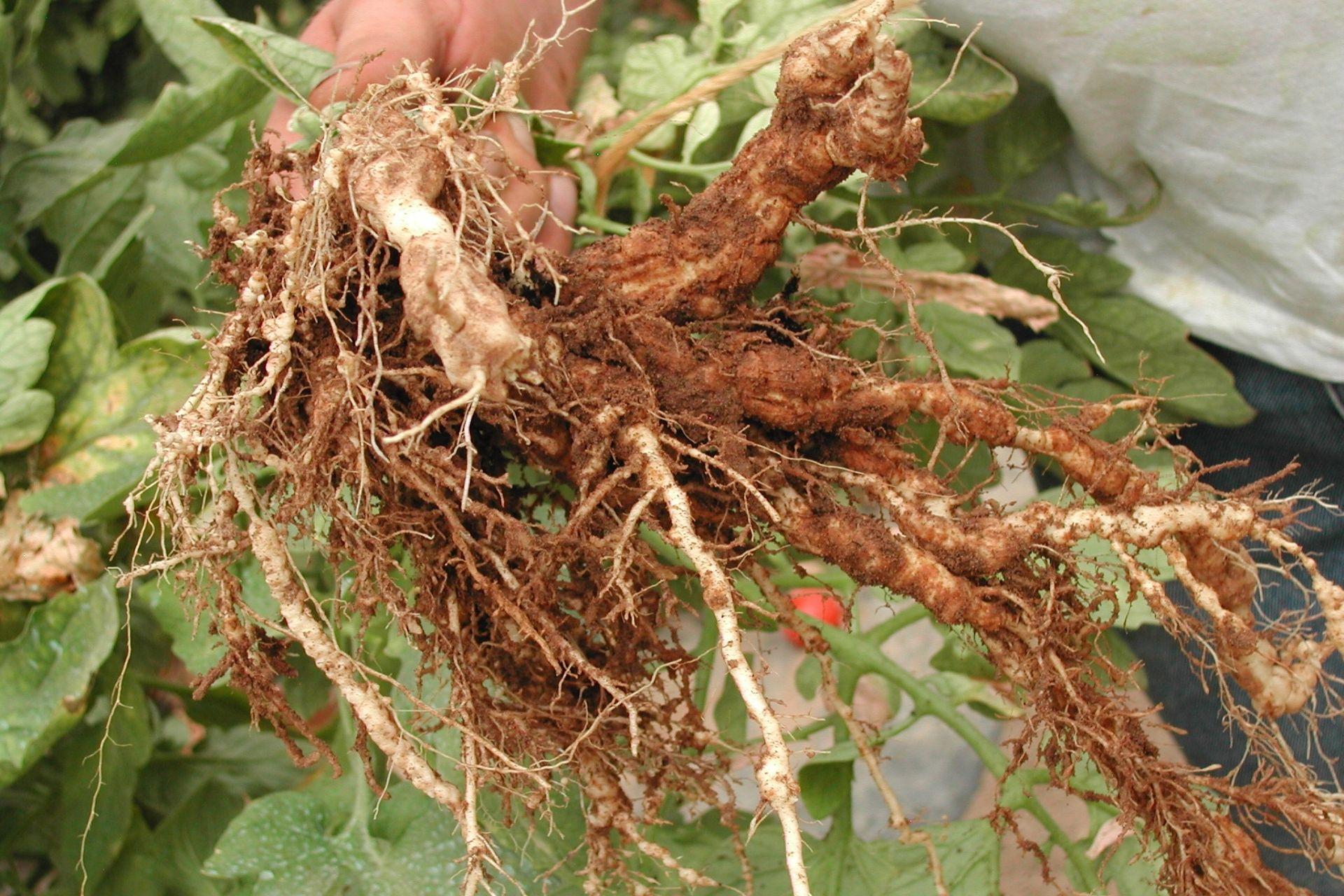
Tomato root significantly affected by nematodes
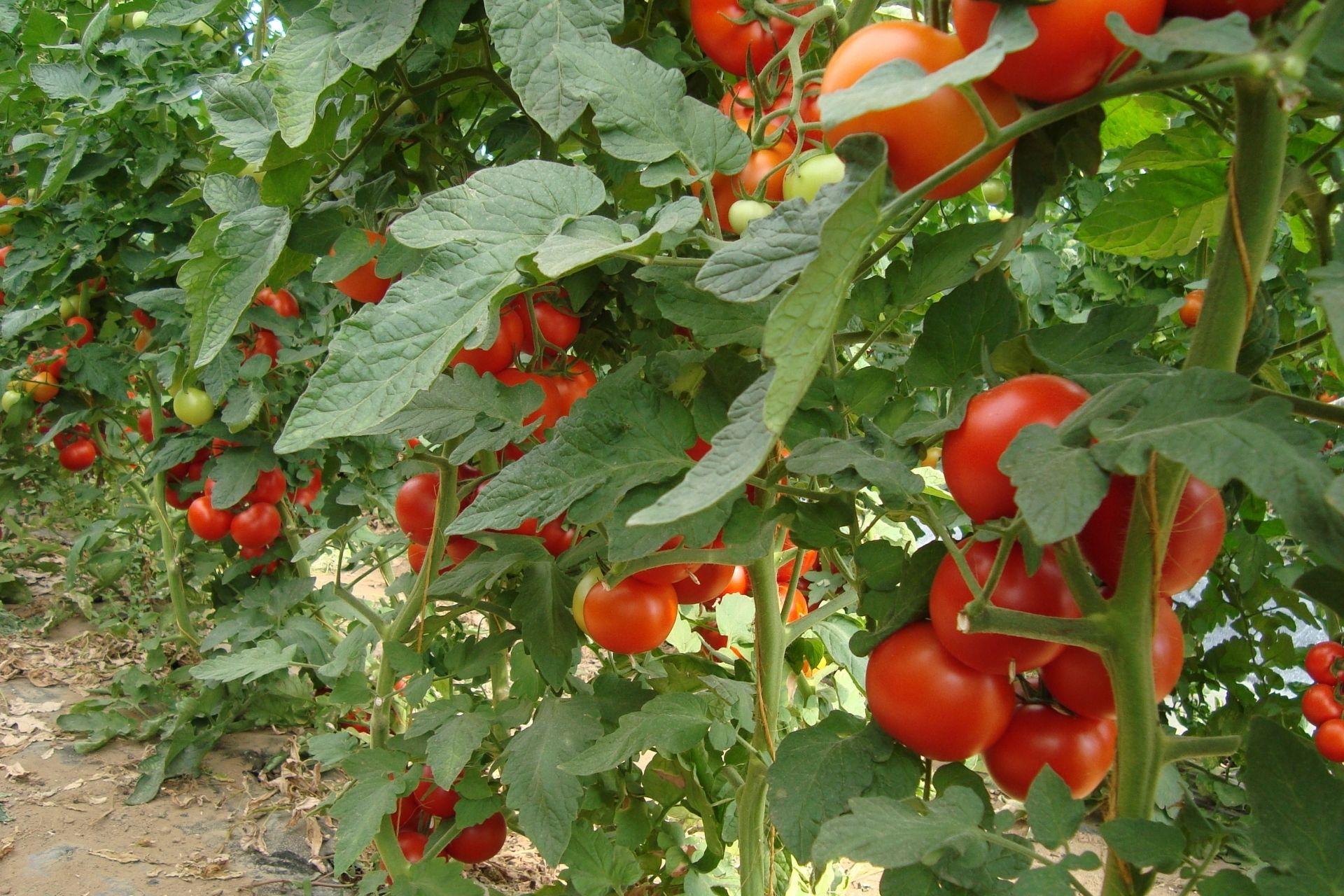
Tomato crop treated with BioAksxter®
2° Case History: Nematodes in basil, celery and cucumber crops
The farm C.C. in Cavallino Treporti, near Venice, in order to reduce use of chemical synthesis, has been using BioAksxter® for 14 years. The aim was to improve production in terms of both quality and quantity along with the health of the crops. The biggest challenge was nematodes.
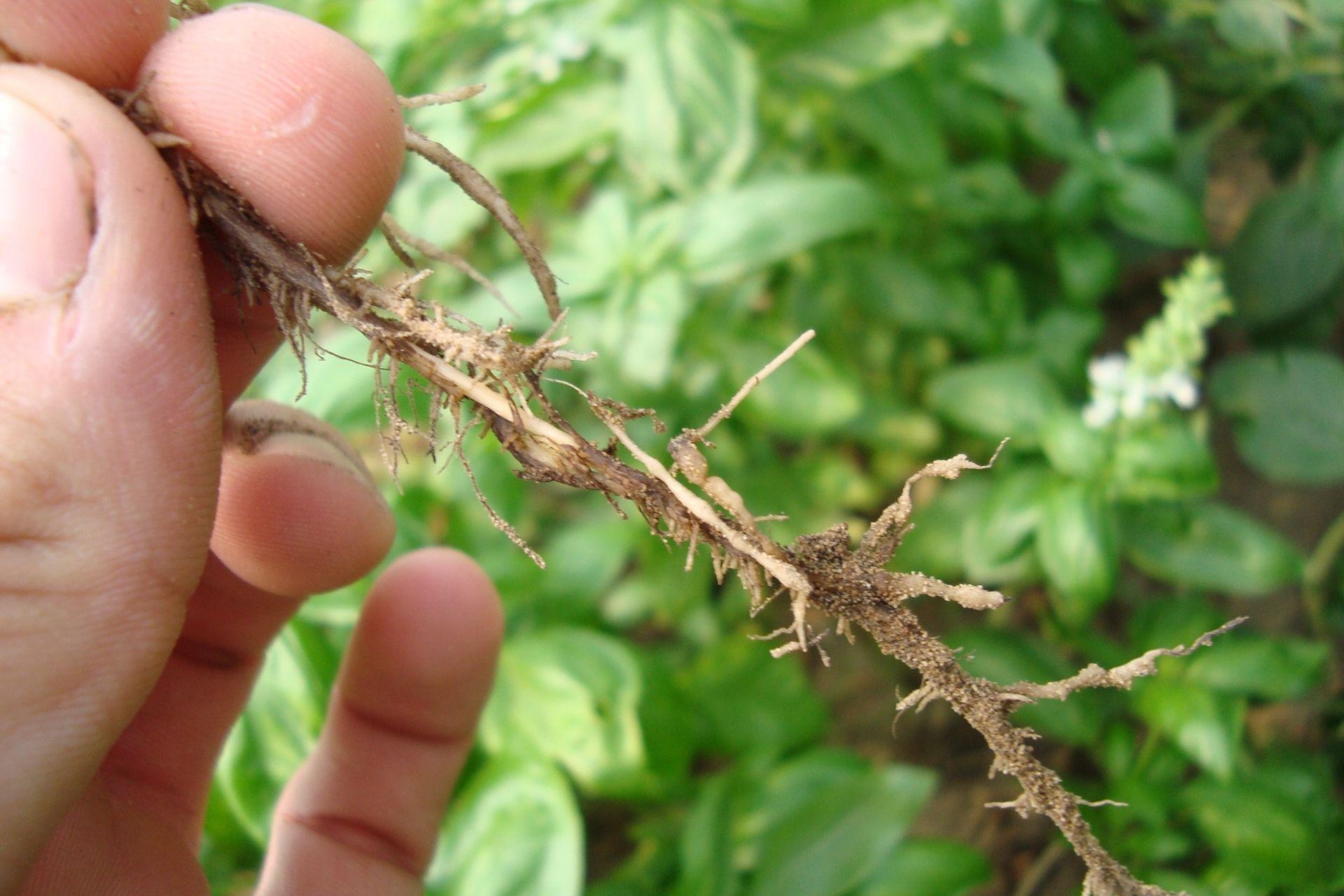
Basil root affected by nematodes
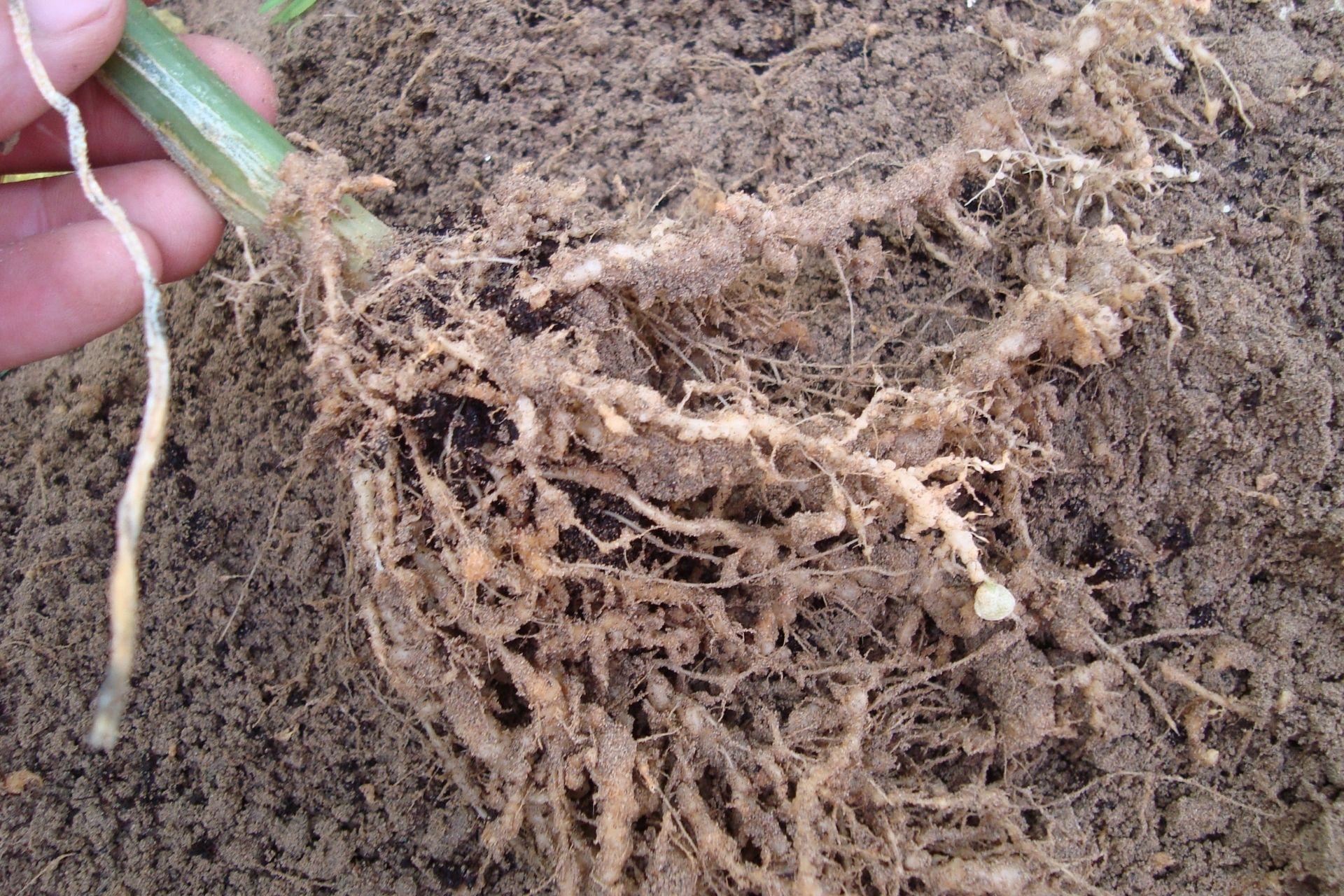
Nematode attack on young cucumber plant
Since the first year of treatment on celery, there have been no significant nematode attacks.
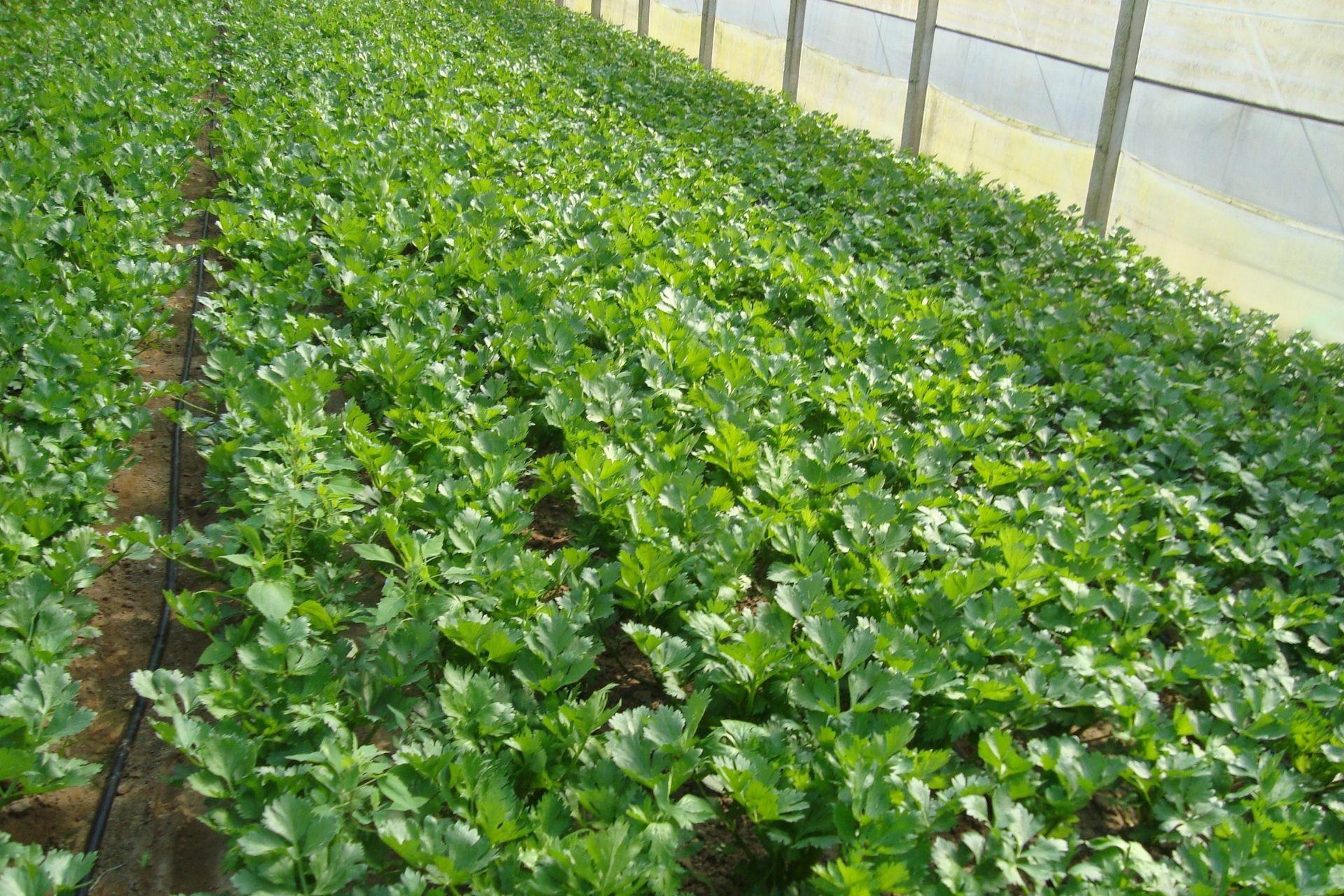
Celery after treatment with BioAksxter®
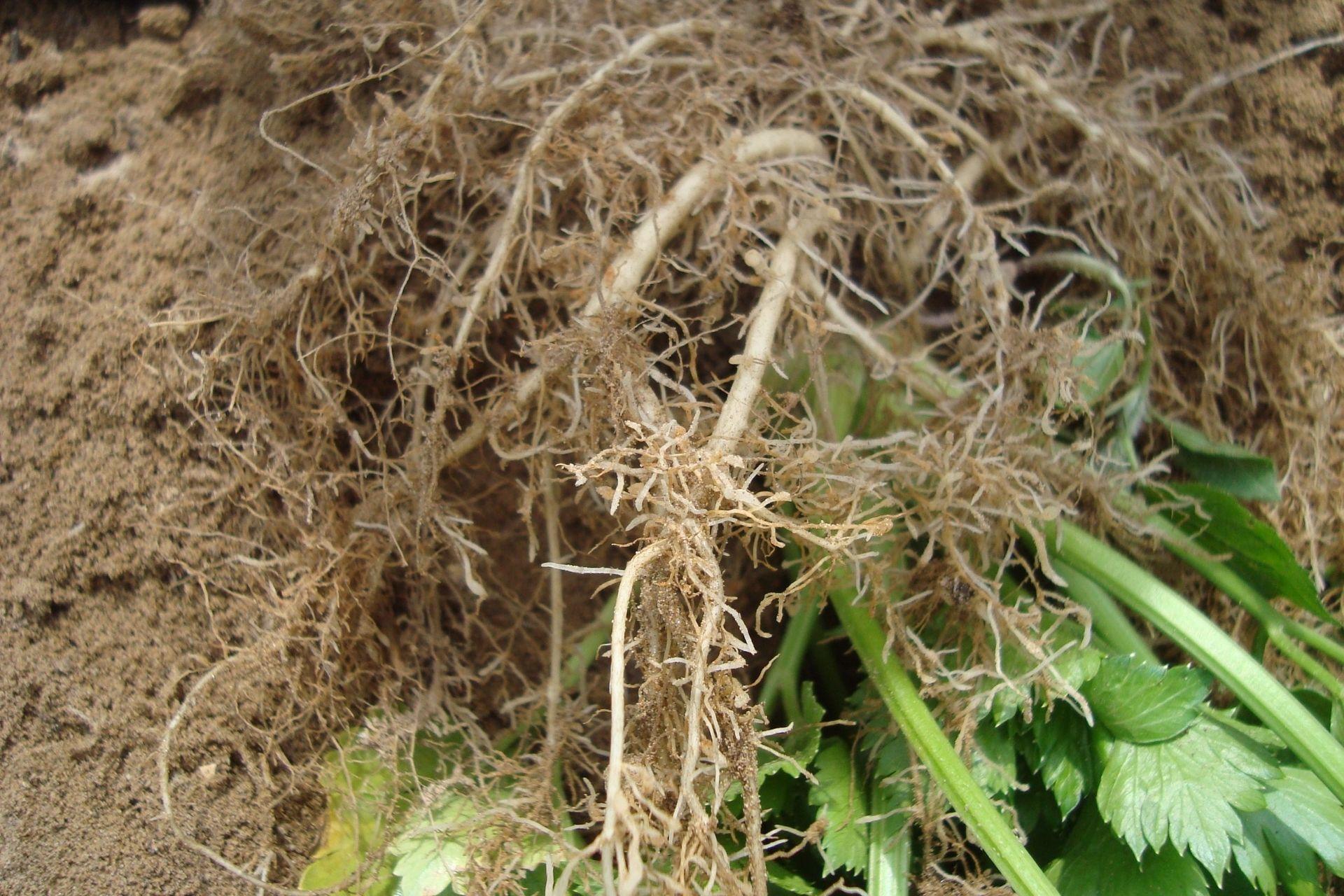
Celery root after treatment with BioAksxter®
In the second year of use of BioAksxter®, in the majority of greenhouses where cucumber was grown there was a significant reduction in nematode damage with an increase in yield in the summer compared with the spring transplant and an extension of the harvest period by 10 days.
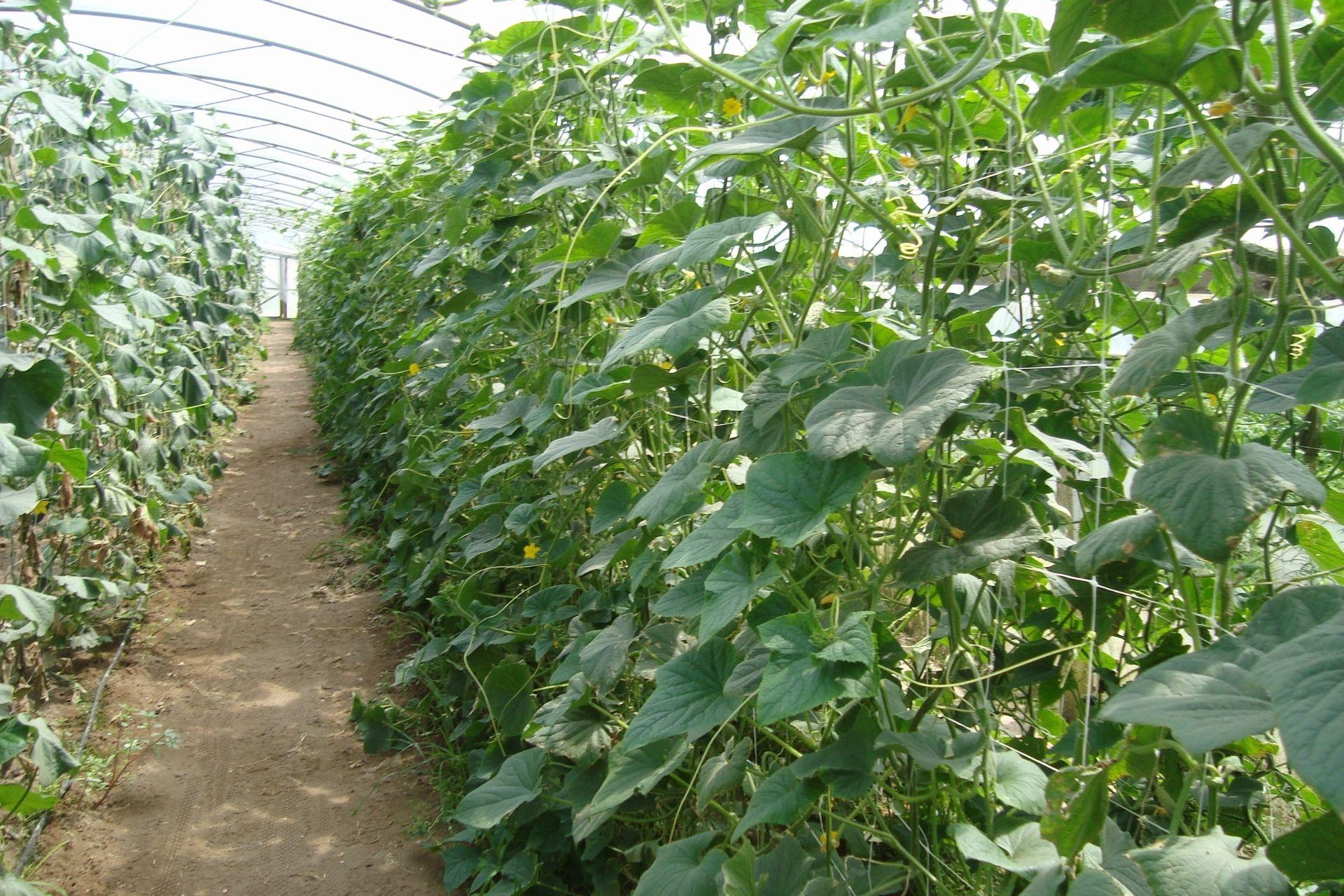
Cucumber in the second year of treatment (8 June)
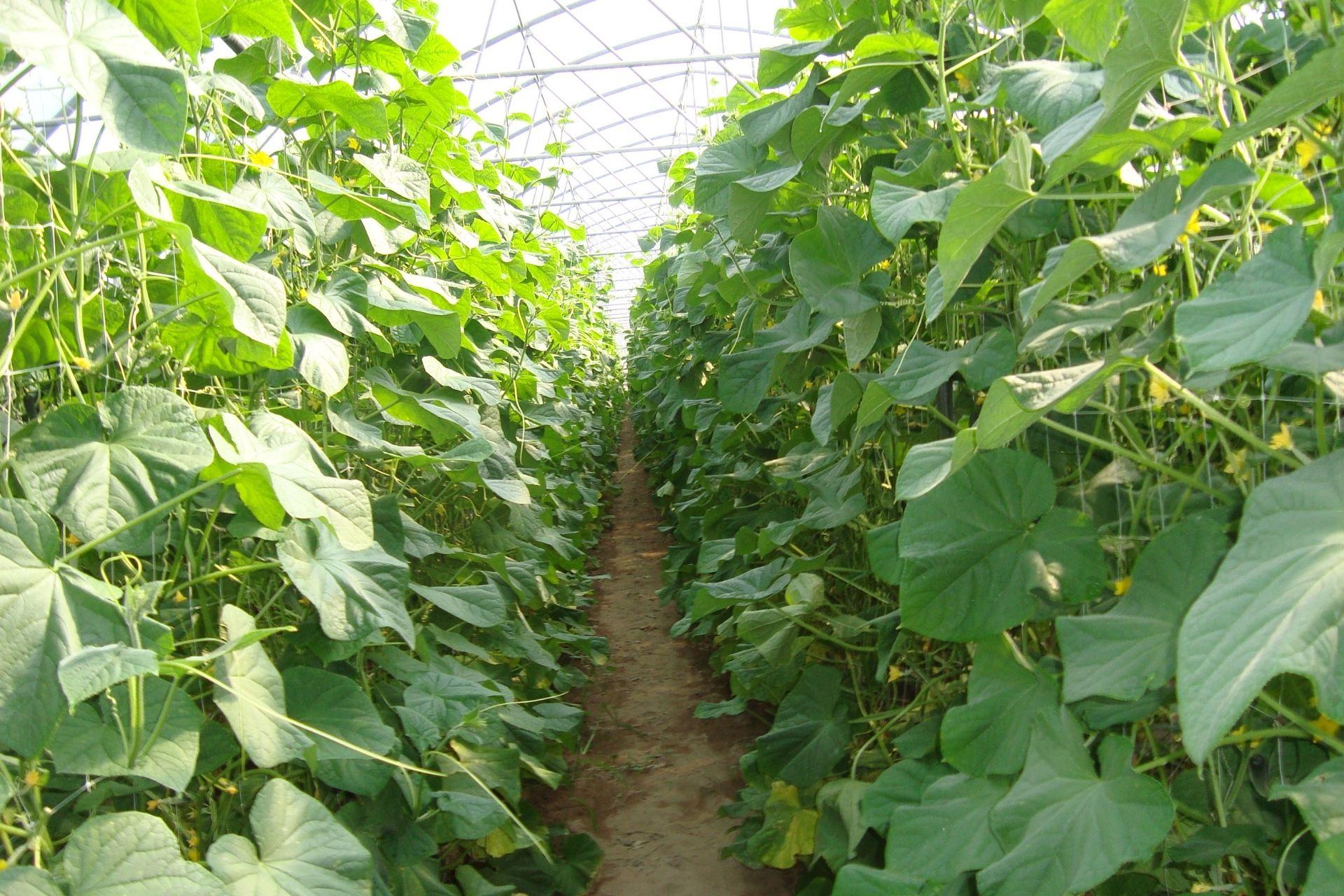
Cucumber in the second year of treatment (27 August)
In the third year of treatment with BioAksxter®, there was a further reduction in nematode damage and a peak cucumber yield was achieved, with an average of 140-180 g/day per plant during the harvest period.
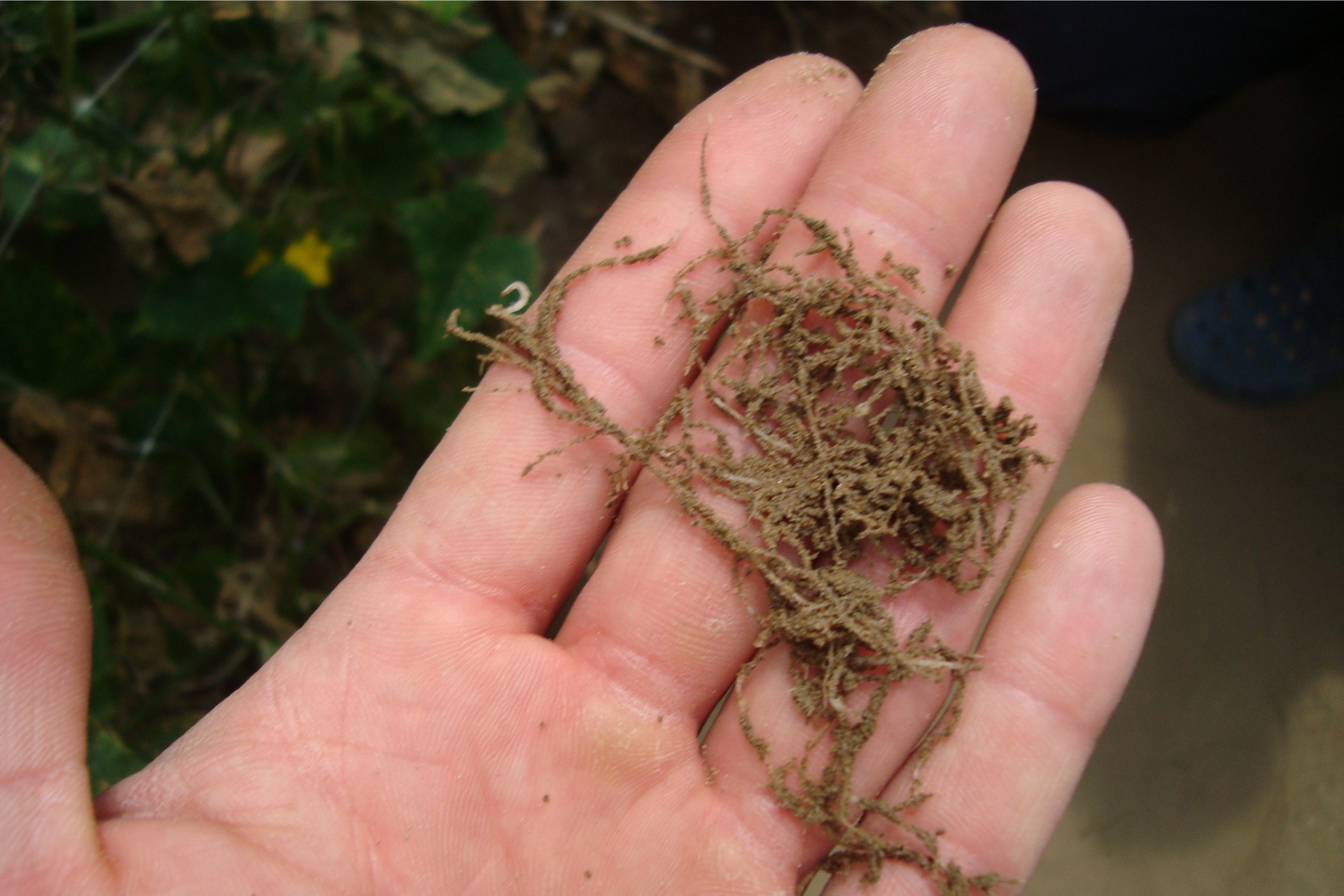
Cucumber roots after 50 days of harvest
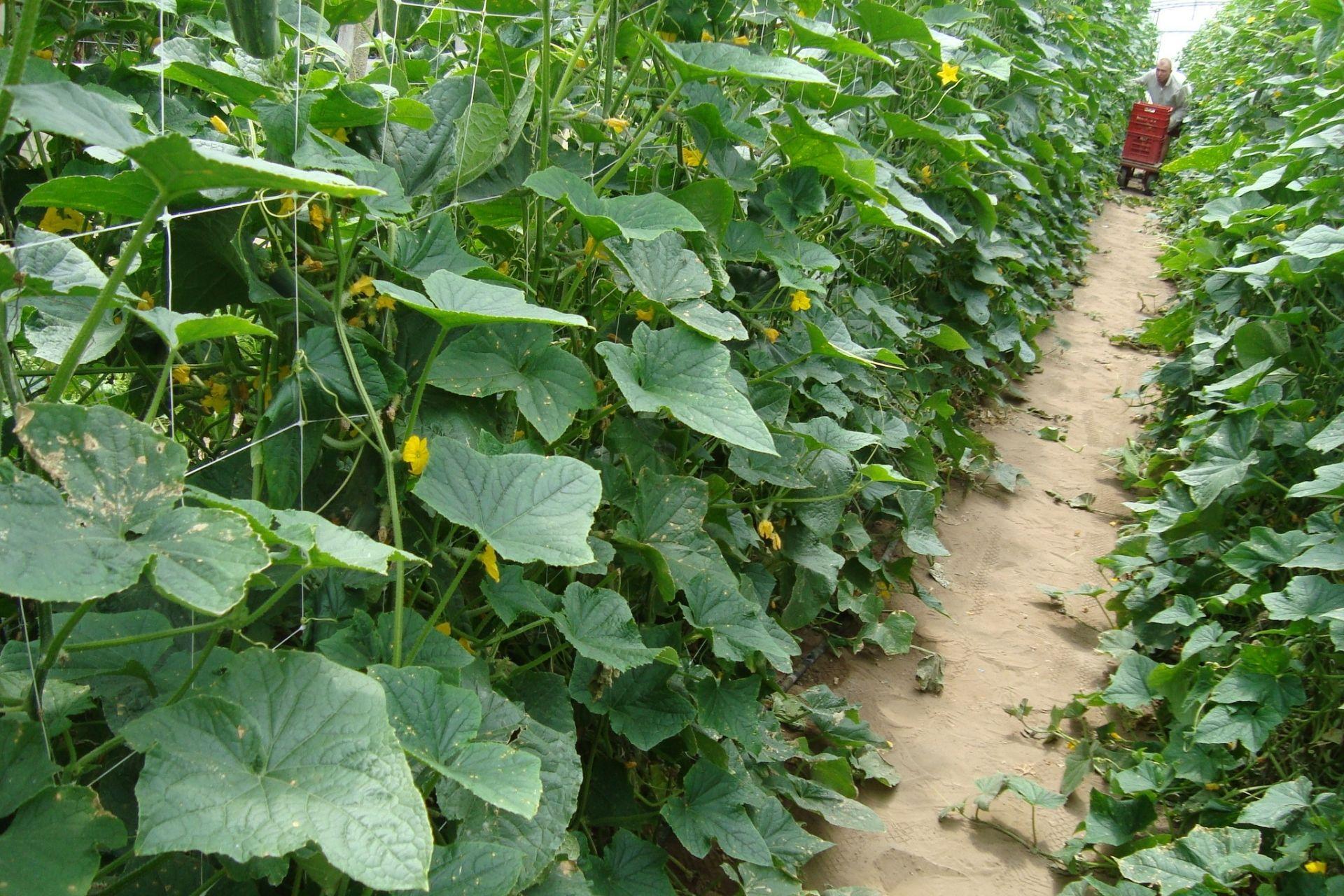
Cucumber after 50 days of harvest
3° Case History: Nematodes in melon crops
The farm M.M. in San Martino Buon Albergo, near Verona, began using BioAksxter® to try to resolve issues of tired land.
In the soil in question, which is been covered by greenhouses for more than 10 years, one of the biggest issues was the large presence of nematodes which had led to the application of fumigation and nematicide products.
After just three months of treatment with BioAksxter®, an easing of the issue could be seen with a qualitative increase in the ° Brix and the harvest and above all an absence of nematodes. Indeed, the roots of the crops treated with BioAksxter® showed no signs of galls, unlike those untreated crops which, despite the application of nematicides, had numerous galls.
Over subsequent years, roots showed no galls from nematodes and production was regular in terms of both quality and quantity.
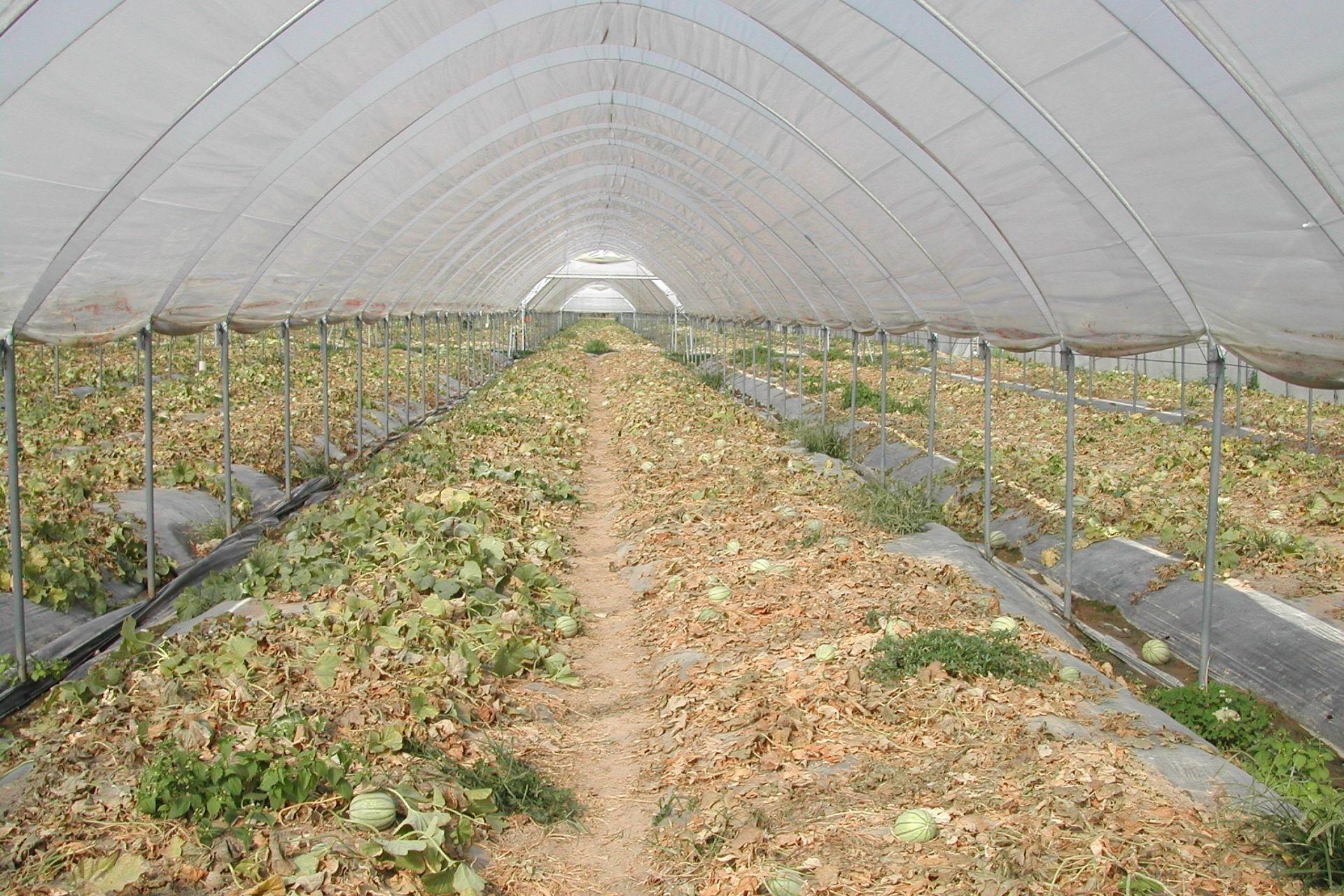
Untreated crops, significantly affected by nematodes
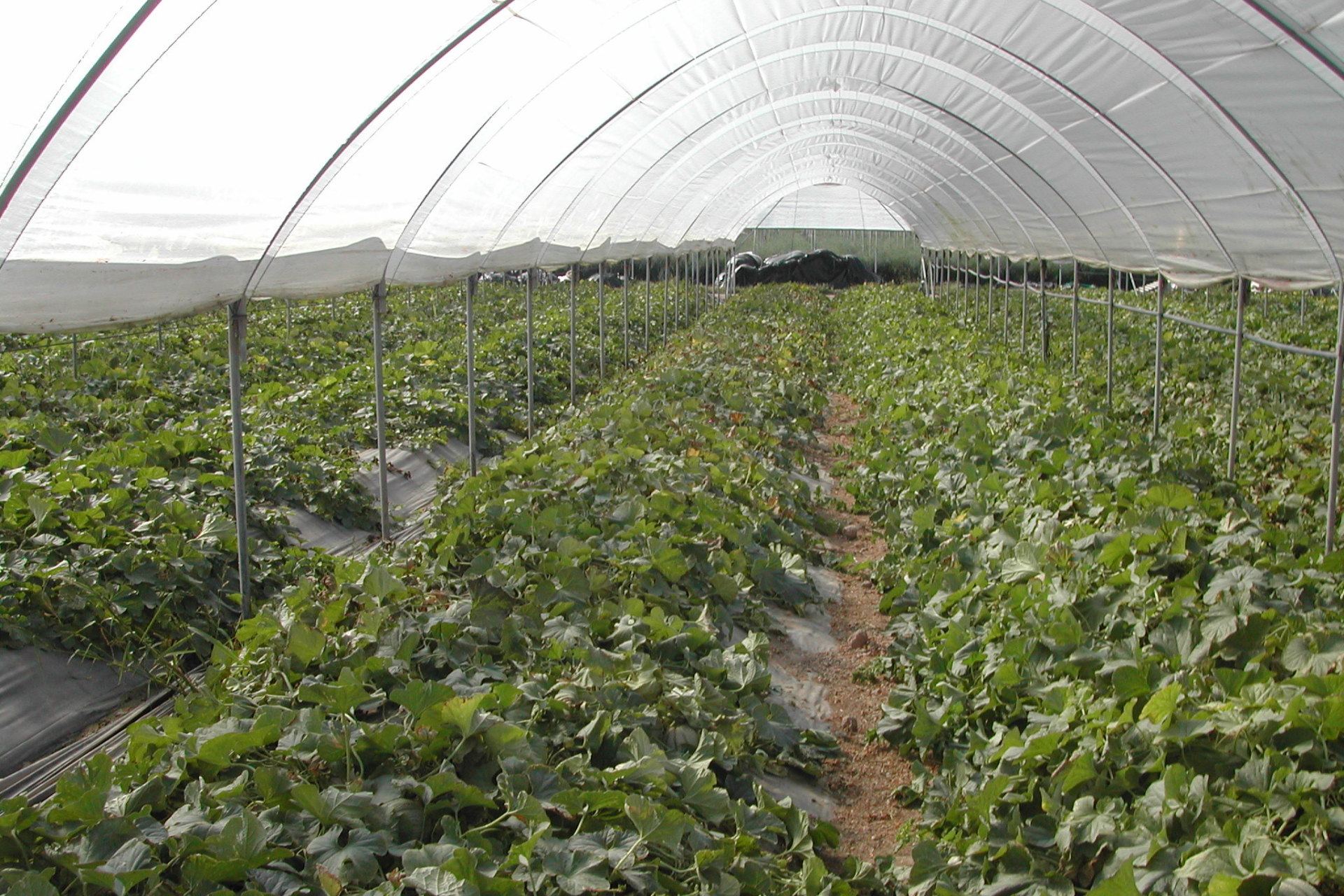
Melon crop treated for 3 months with BioAksxter®, no nematodes at harvest
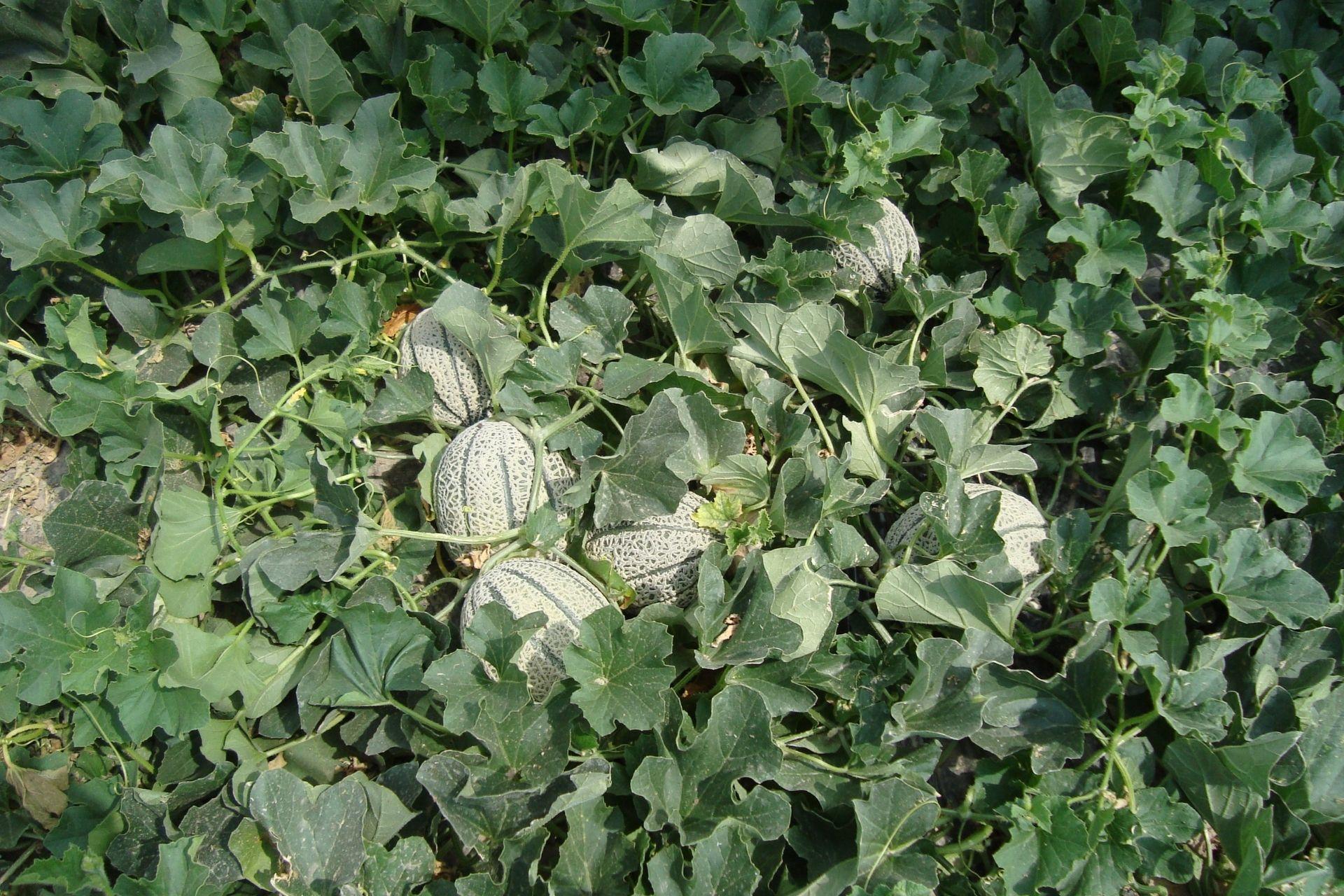
Melon crop treated with BioAksxter®
4° Case History: Nematodes in pepper, courgette, cucumber and melon crops
On the farm A.P. in Nogarole Rocca, near Verona, BioAksxter® has been used on all crops with a view to regenerating the land and avoiding having to use fumigant chemical products.
The issue of nematodes had arisen several years before and effective chemical sterilisation had become increasingly short-lived and less effective, with a nematicide effect that only lasted for one crop cycle.
After three months of cultivation with BioAksxter®, the previous production records for peppers had been exceeded whilst for courgettes there were no signs of nematode galls, not even in growing areas where they had arisen on melons in the previous cycle.
During the first year of farming with BioAksxter®, nematodes were kept under control, limiting galls to certain areas of the crop. Production increased and for peppers there was a further increase in size, reducing the number of peppers per crate from 10 to 8.
Over subsequent years, results improved gradually since the issue of nematodes had apparently been solved, extending the harvest period and increasing production.
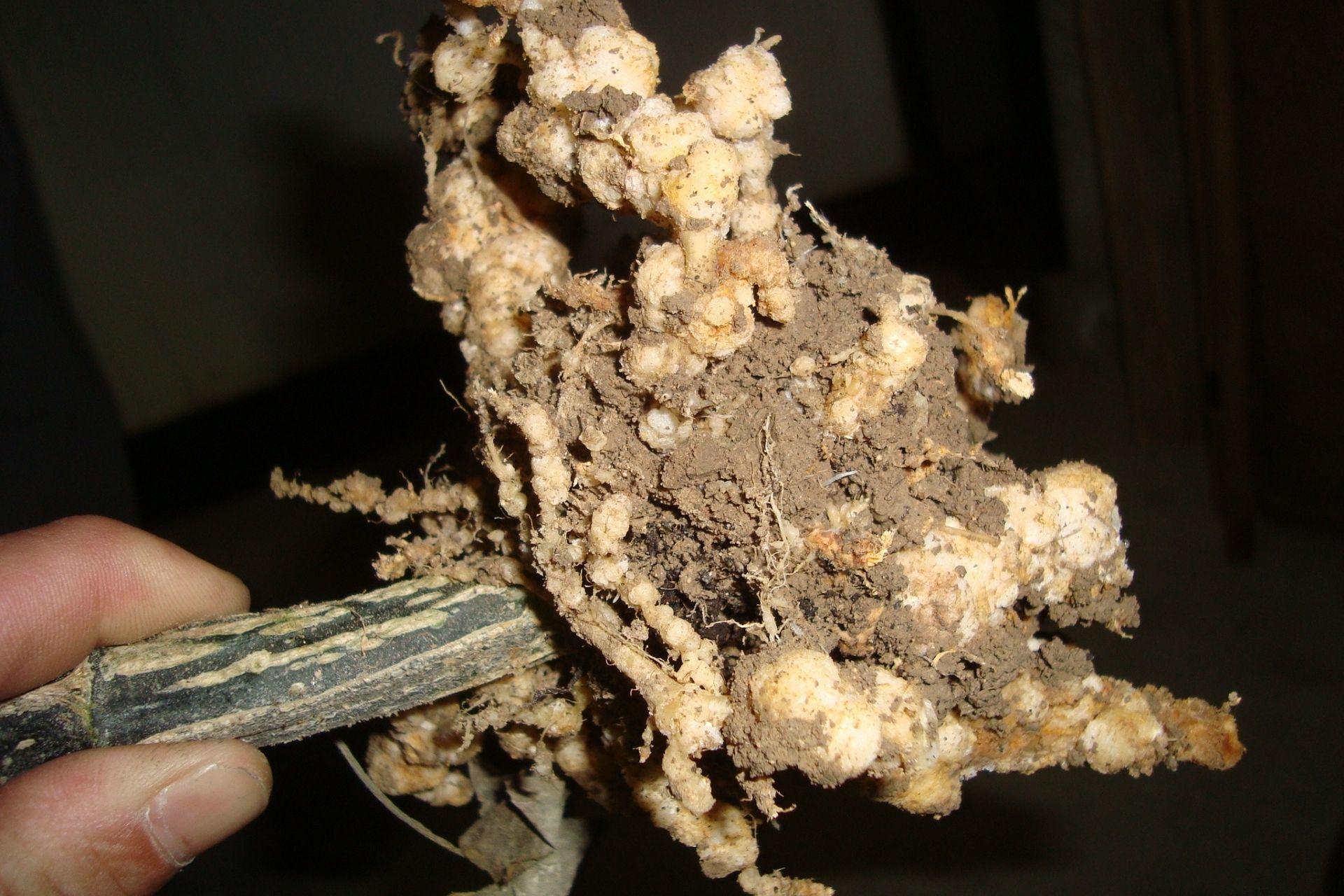
Courgette root affected by nematodes
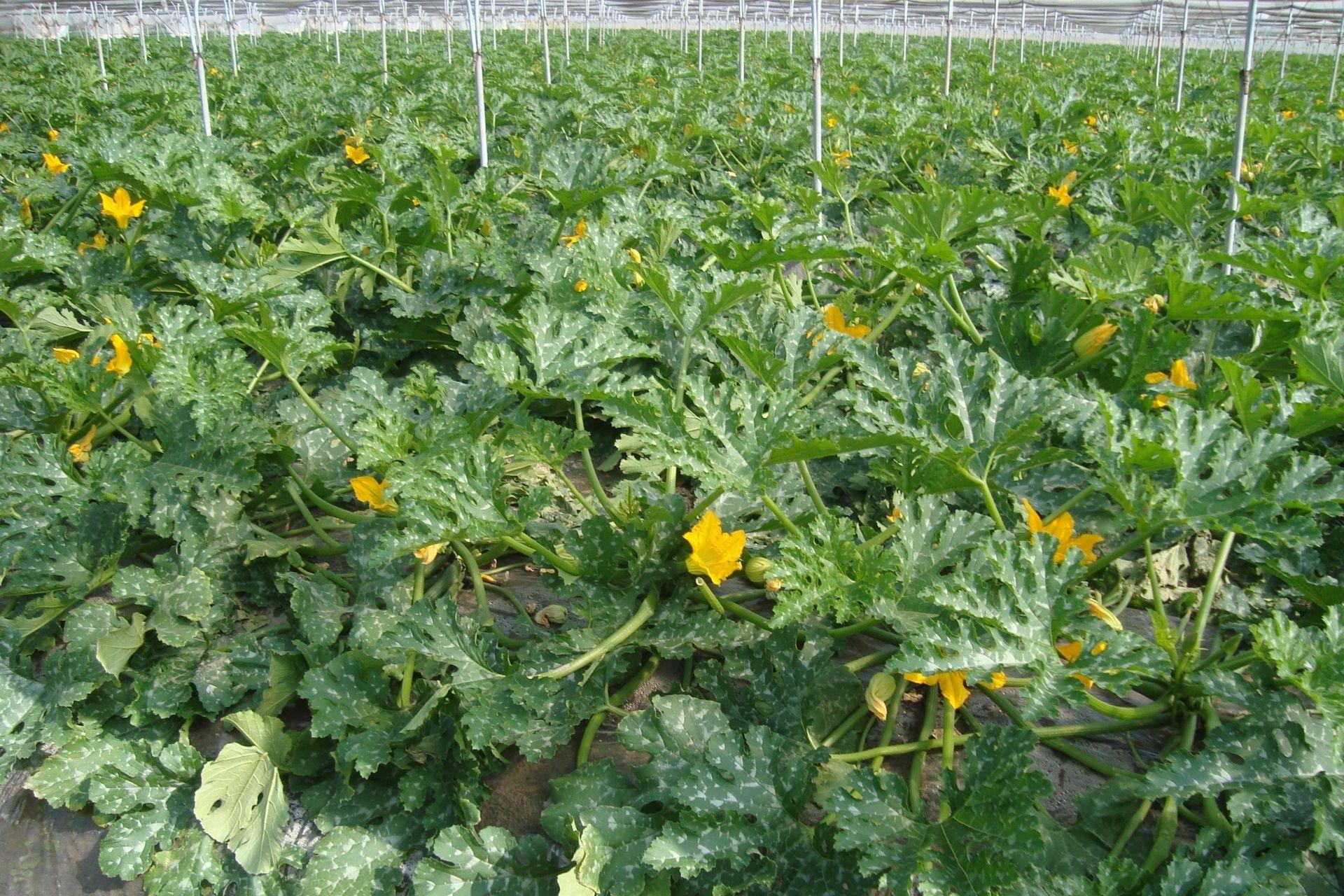
Courgette crop after treatment with BioAksxter®
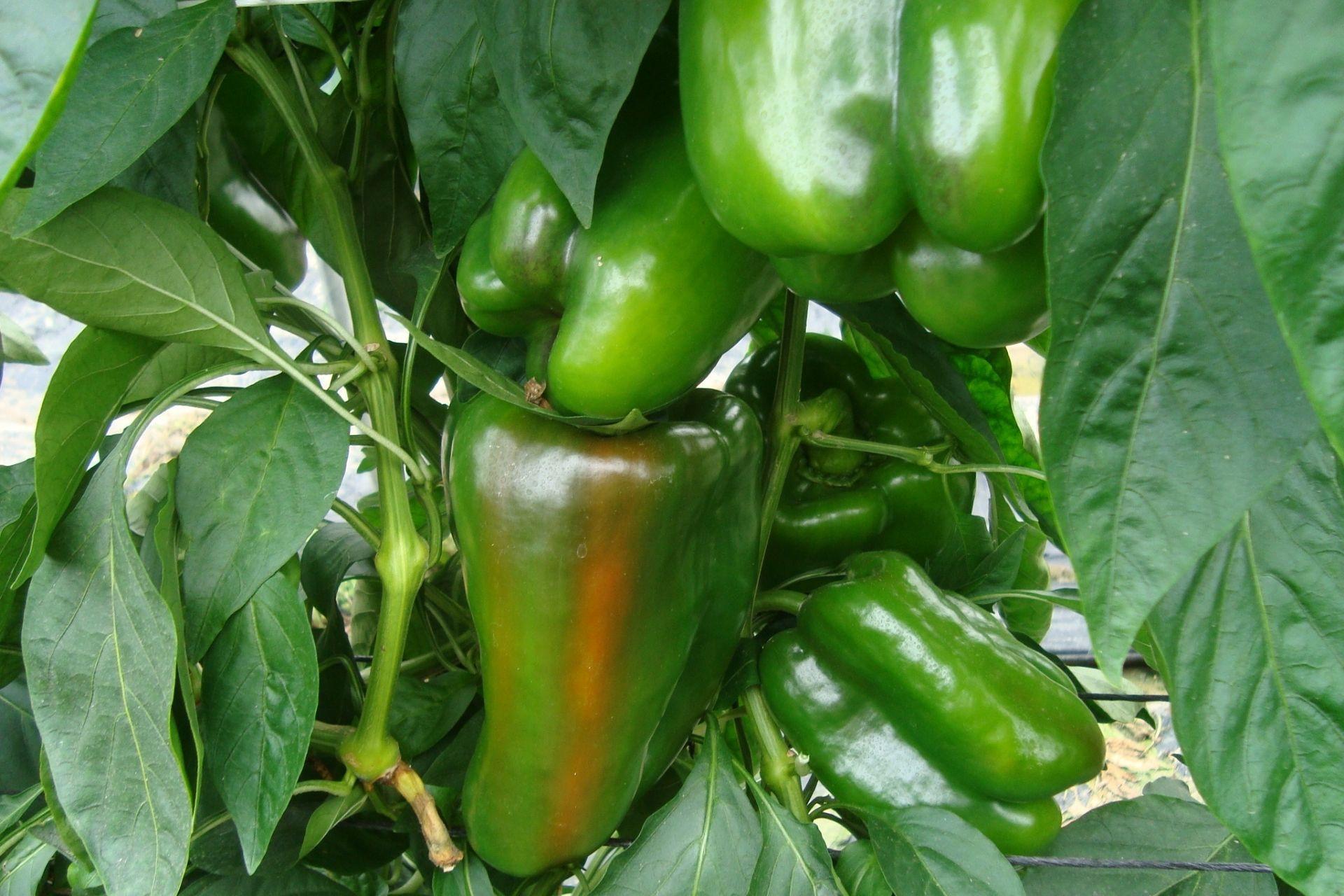
Pepper crop after treatment with BioAksxter®
5° Case History: Nematodes in the farming of lettuce, cucumbers, courgettes, tomatoes and aubergines
The farm P.Z. in Verona, which has used BioAksxter® for 14 years, began treating crops in order to resolve the issue of nematodes in greenhouse crops. They no longer wanted to use chemical fumigation which had been necessary for several years to avoid losing the harvest from the second transplants.
From the very first year of cultivation with BioAksxter®, productivity increased in the tomato crop and for the second cucumber transplant nematode resistance increased; in fact, despite the presence of galls on the roots, yield and the harvest period were regular.
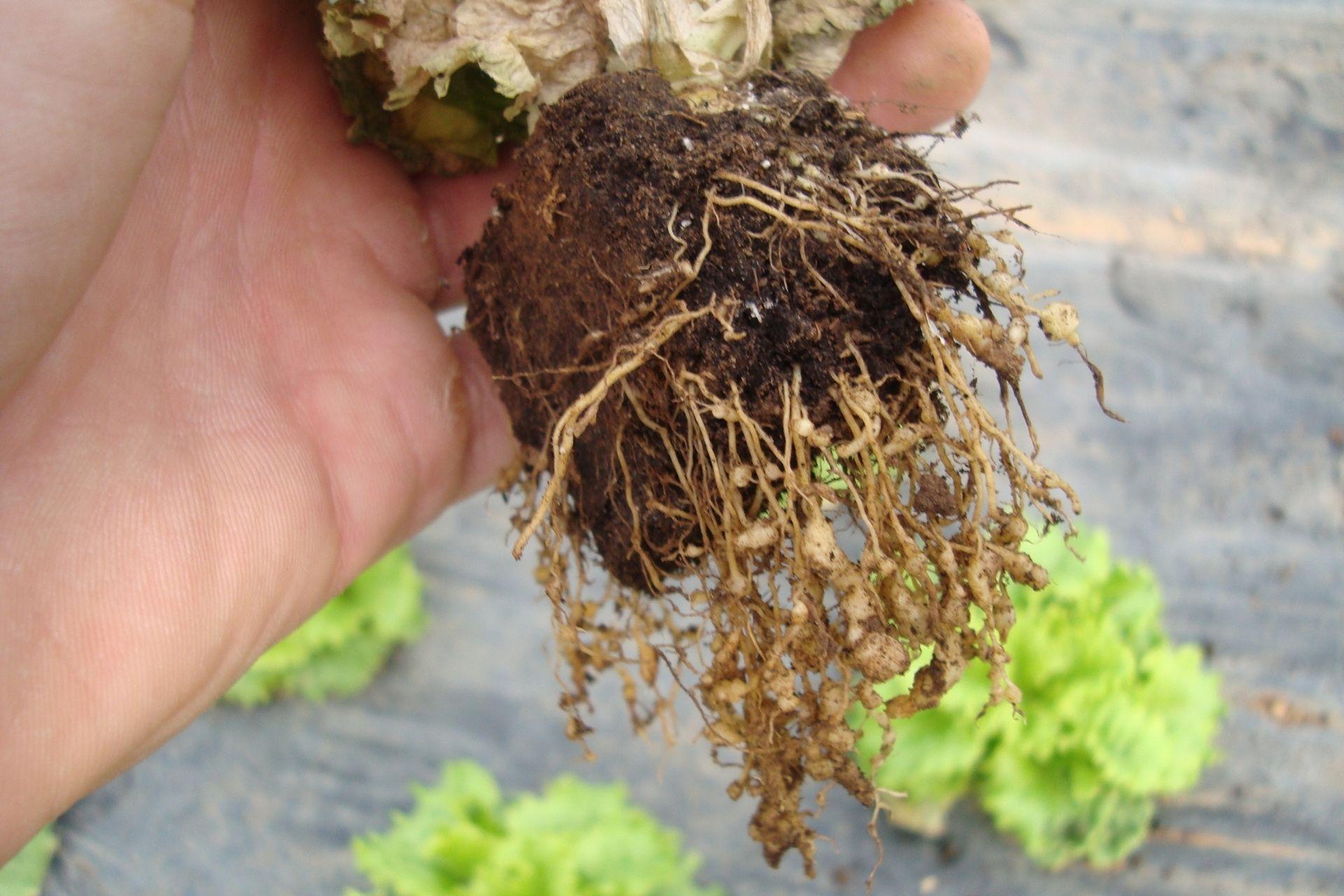 Lettuce root affected by nematodes
Lettuce root affected by nematodes
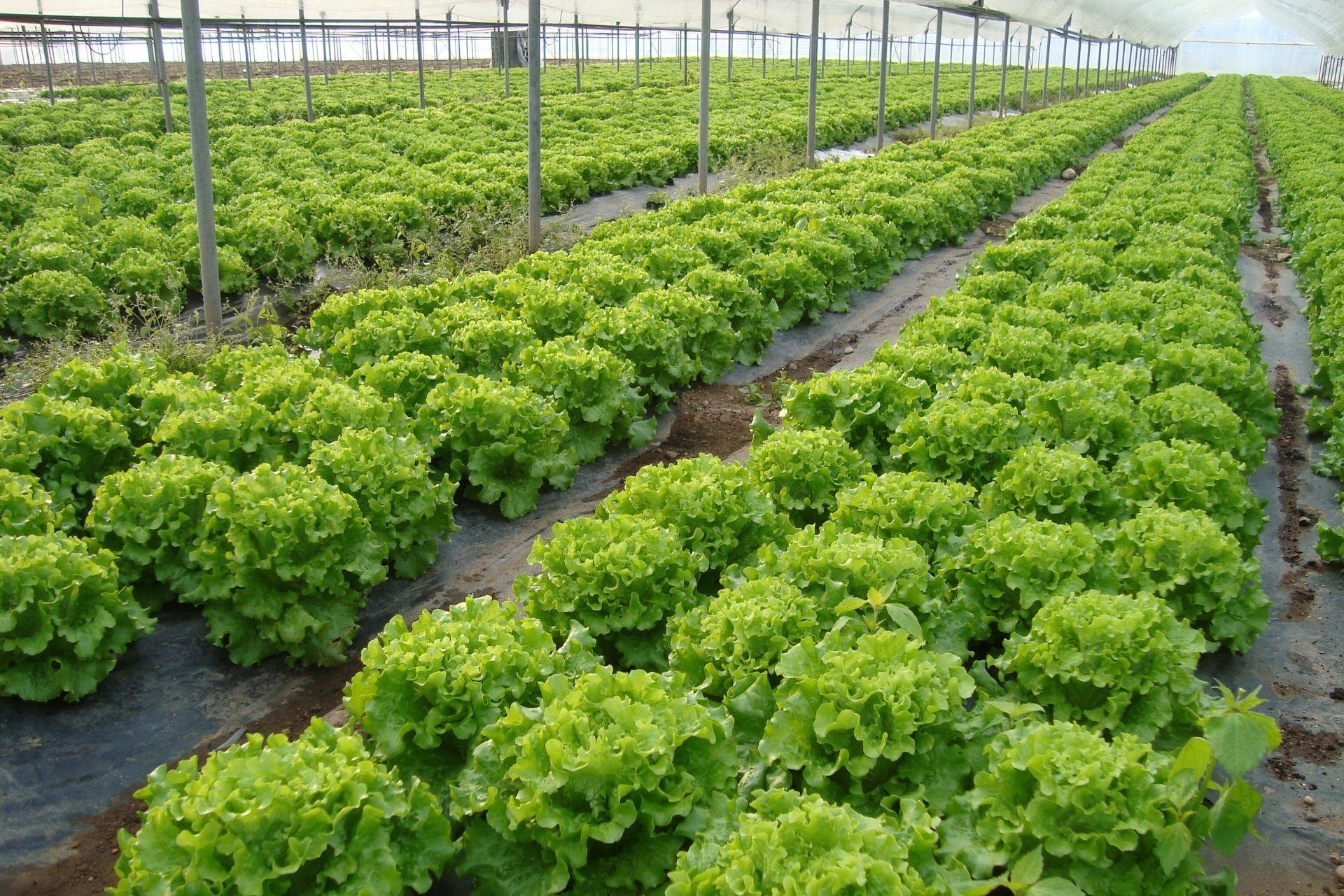
Lettuce crop after treatment with BioAksxter®
In the second and third years of treatment, the nematode issue was permanently resolved. The tomato crop no longer had any nematode galls and for the cucumber and courgette crops, the harvest periods were extended by 60 and 90 days respectively, for both the first and second transplants.
In terms of yield, the tomato crop increased by 20% and the open field aubergine crop increased by 47%, despite repeating the crop in the same soil for the third consecutive cycle.
In the fourth year, the previous results about the absence of nematodes and the excellent health of the plants were confirmed whilst there were further yield improvements, particularly for greenhouse tomatoes and aubergines, with harvests reaching respectively more than 90 and 130 tons per hectare.
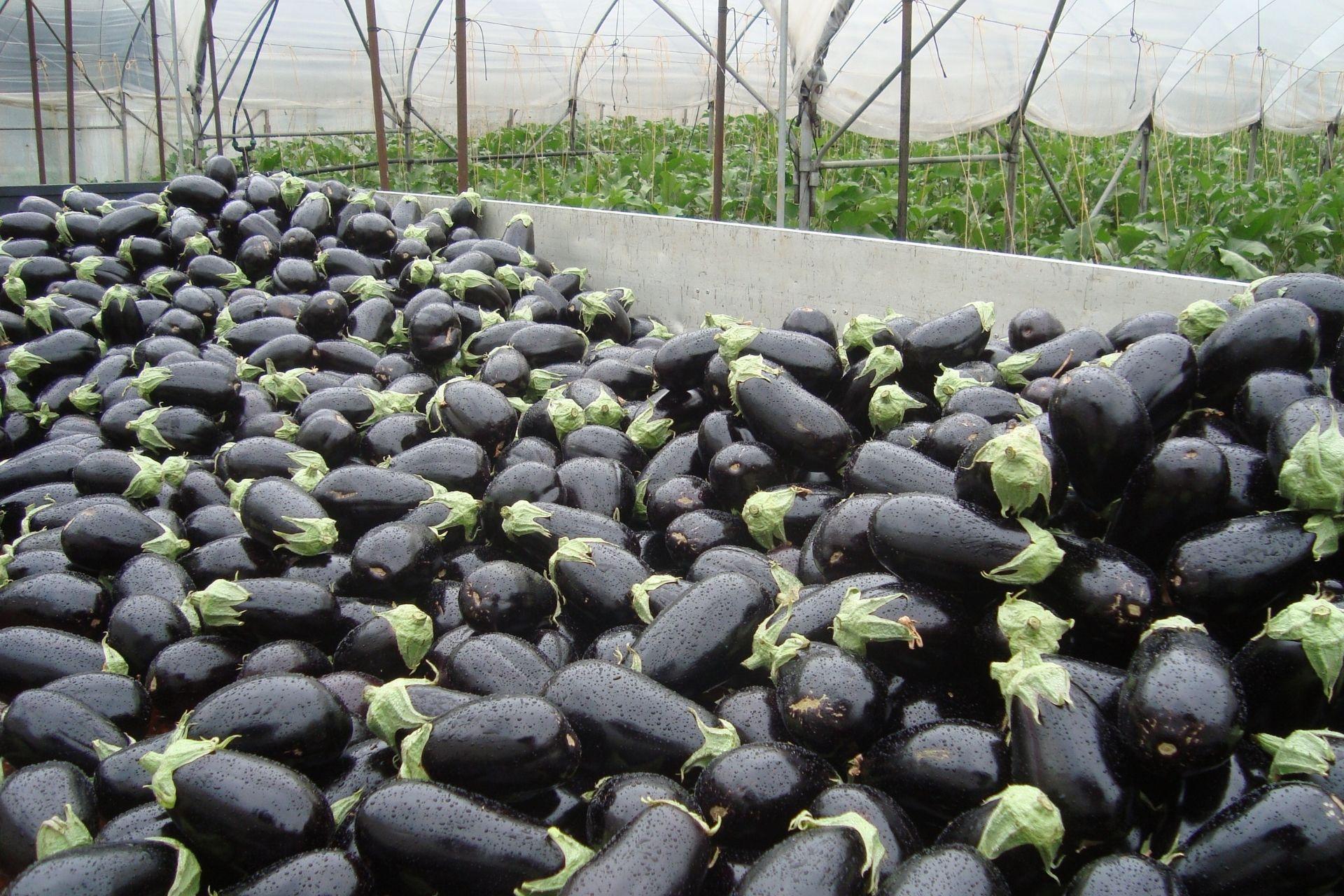
Aubergines grown with BioAksxter®
6° Case History: Nematodes in courgette, cucumber, salad and tomato crops
The farm M.S. in Verona has used BioAksxter® for 17 years. They turned to it in an attempt to improve the health of the crops which were suffering from nematodes. Despite agronomic changes and the use of chemicals, the problem was gradually increasing, leading to a reduction in the harvest period and particularly in yields. Specifically, for more sensitive crops like cucumbers and courgettes, the spring crops had gone from 100-120 harvest days in the first few years of cultivation to 80-90 days.
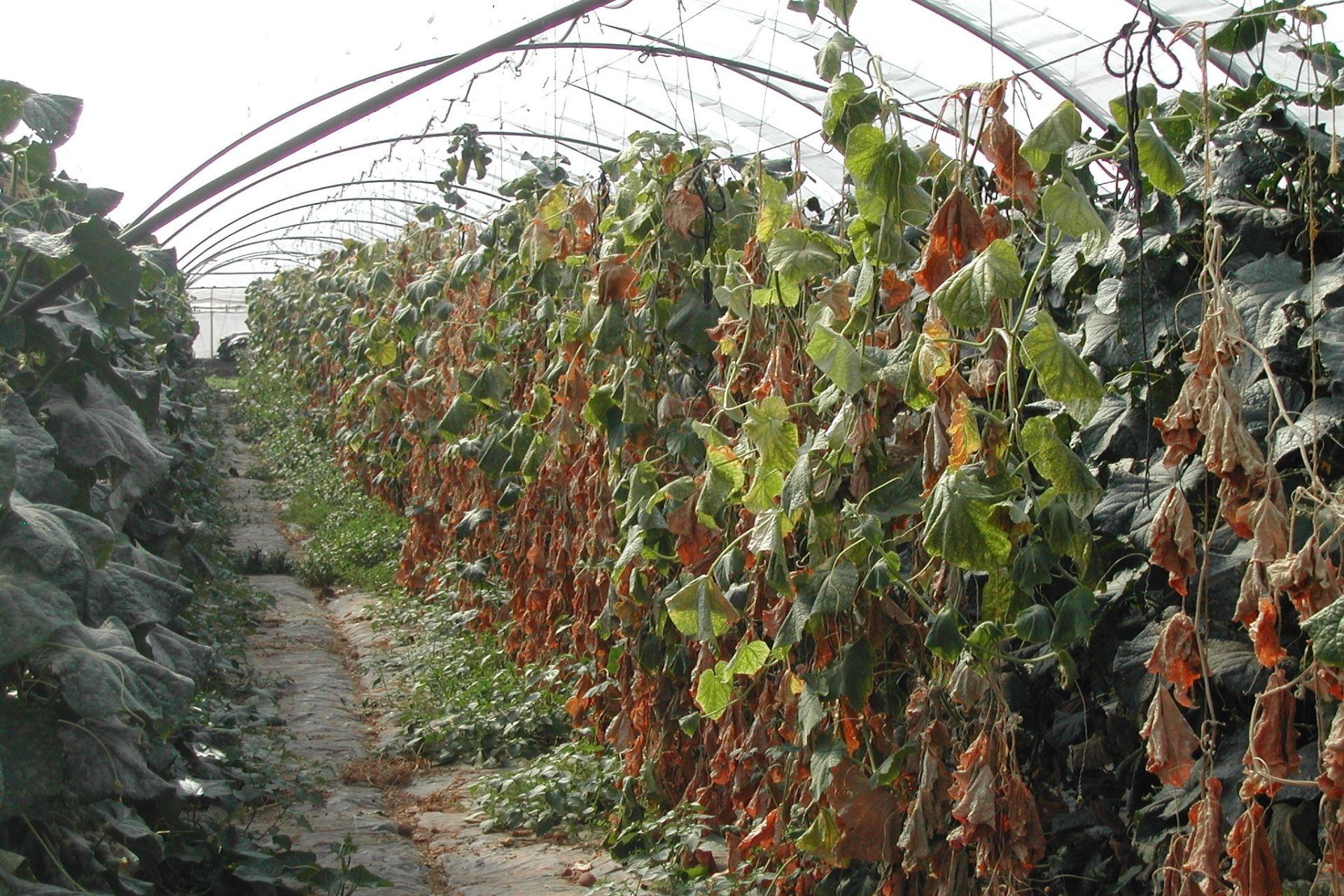
Cucumber crop damaged by nematodes
After one year of treatment with BioAksxter®, thanks to increased nematode resistance, the harvest cycle for courgette and cucumber transplants in March exceeded 100 days. With the use of BioAksxter®, salad crops also showed no sign of nematodes. Over subsequent years, there was no shortfall in yields due to nematodes, this period was in fact marked by an increase in yields, improved appearance and organoleptic quality, longer shelf-life and above all a longer harvest period.
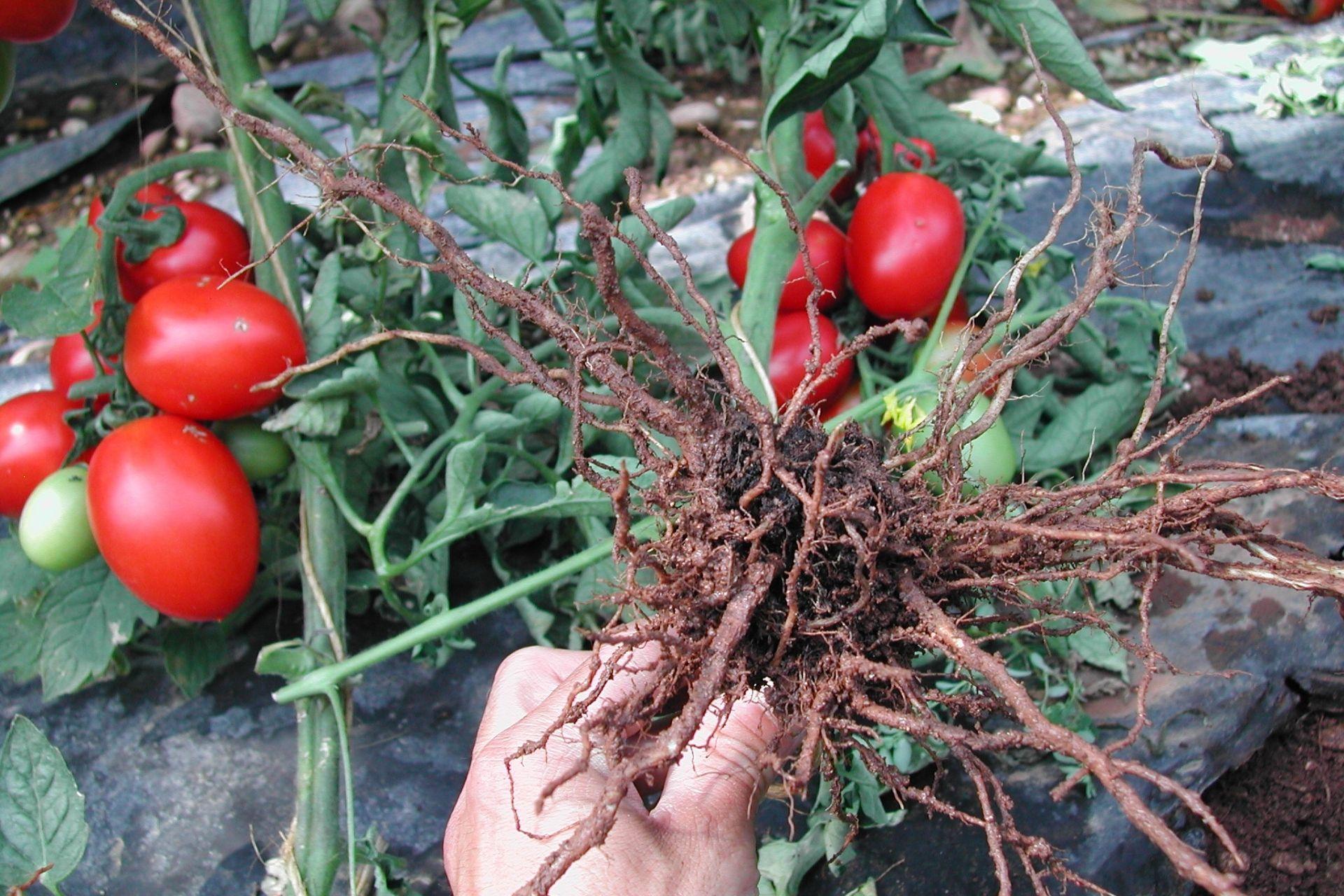
Completely nematode-free tomato root after two years of treatment with BioAksxter®
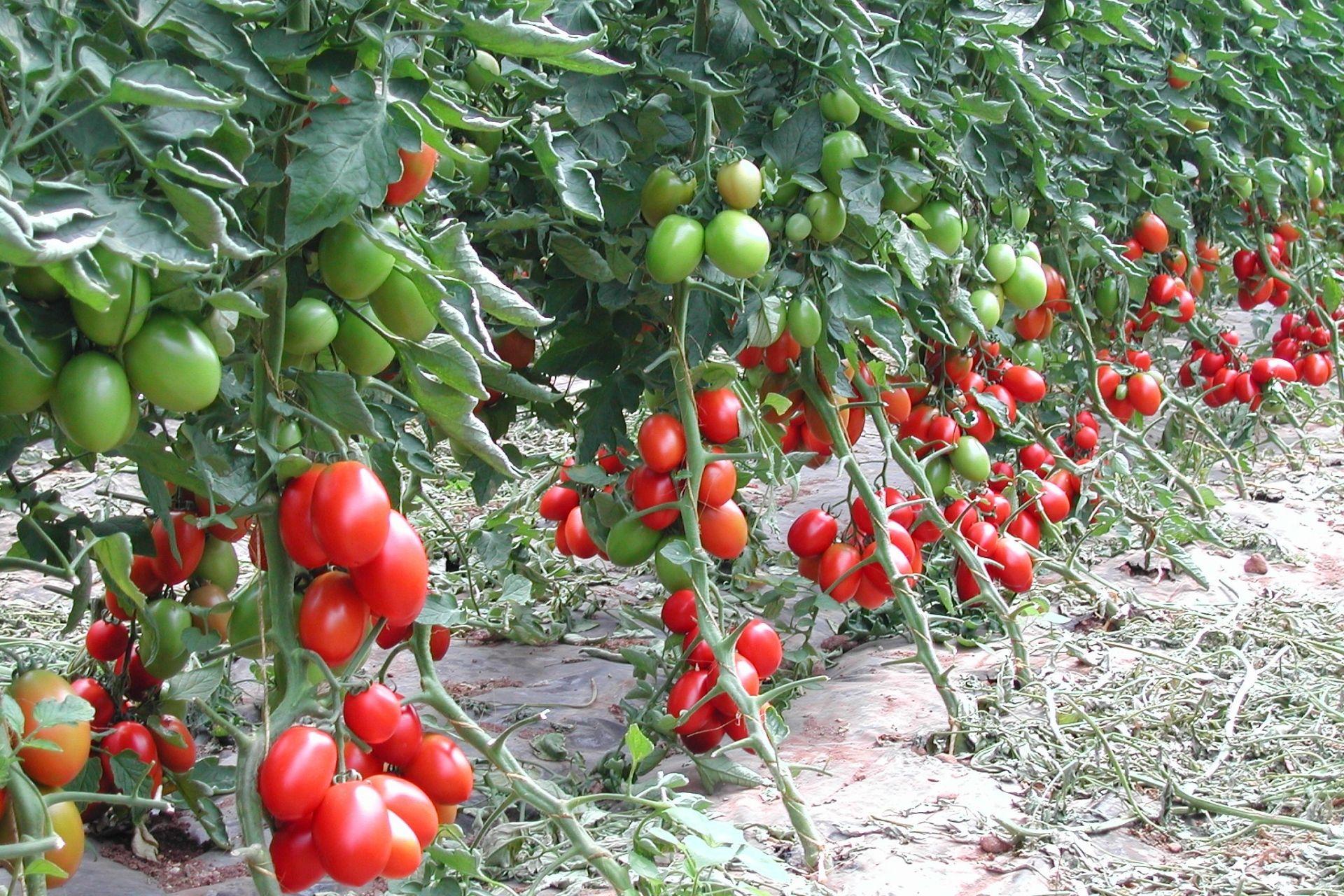
Cultivation of tomatoes after two years of treatment with BioAksxter®
7° Case History: Nematodes in aubergine, courgette, melon, salad and tomato crops
The farm D.G. in Alpo di Villafranca near Verona as always focused on high-quality crops, introducing BioAksxter® in its intensive crops in order to improve quality, increase yields and
reduce the growing health problems.
The issue of nematodes in the soil was limited to the cultivation of aubergines, courgettes, melons, salad and tomatoes.
After two years of treatment with BioAksxter®, the client confirmed that agronomic and production results were similar to those from virgin soil because with less fertiliser and protective actions they were able to obtain healthy and productive crops.
Indeed, the protection and nutrition of all crops was significantly simplified, with greater resistance to nematode attacks.
The farm has used BioAksxter® for 17 years.
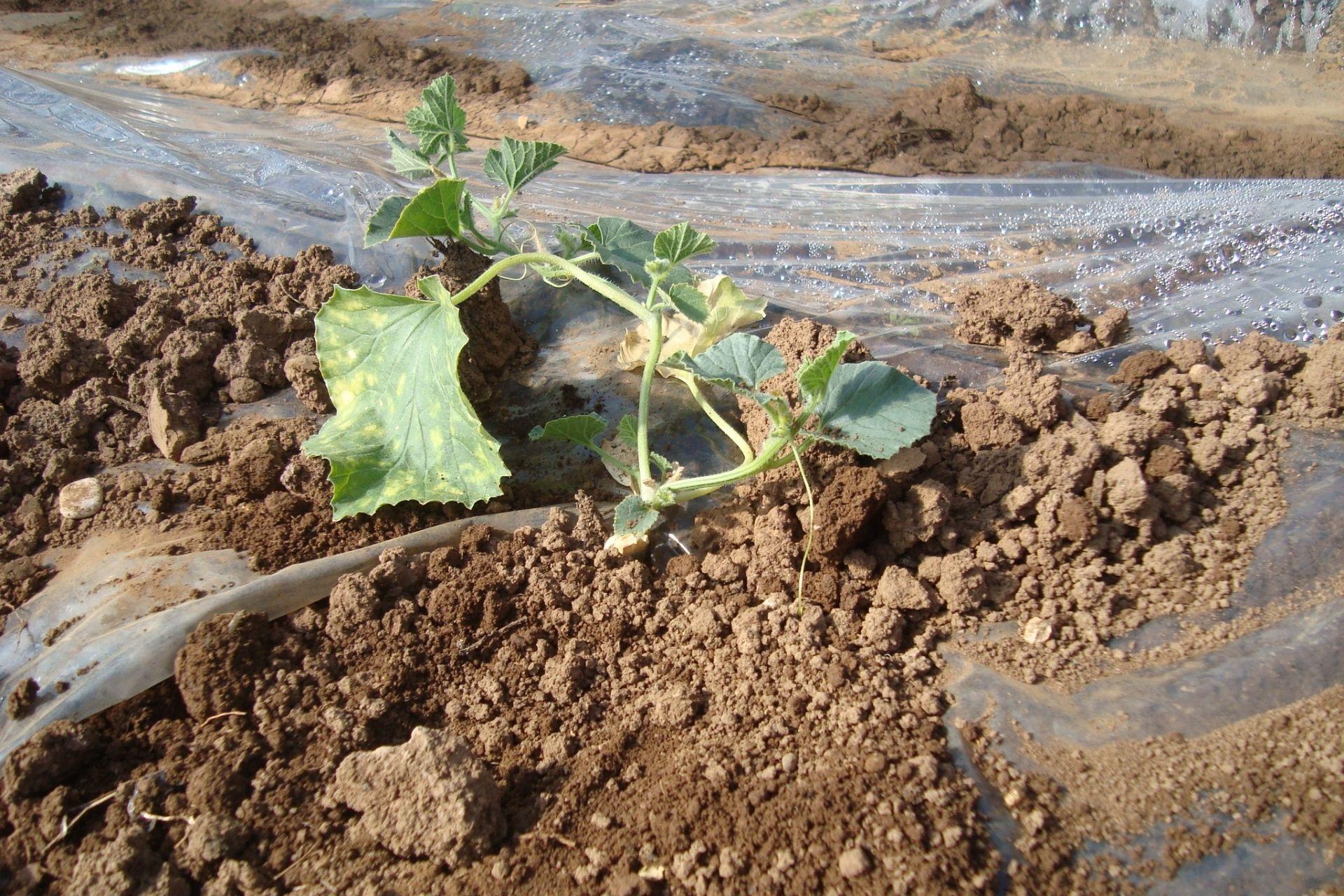
Melon crop damaged by nematodes
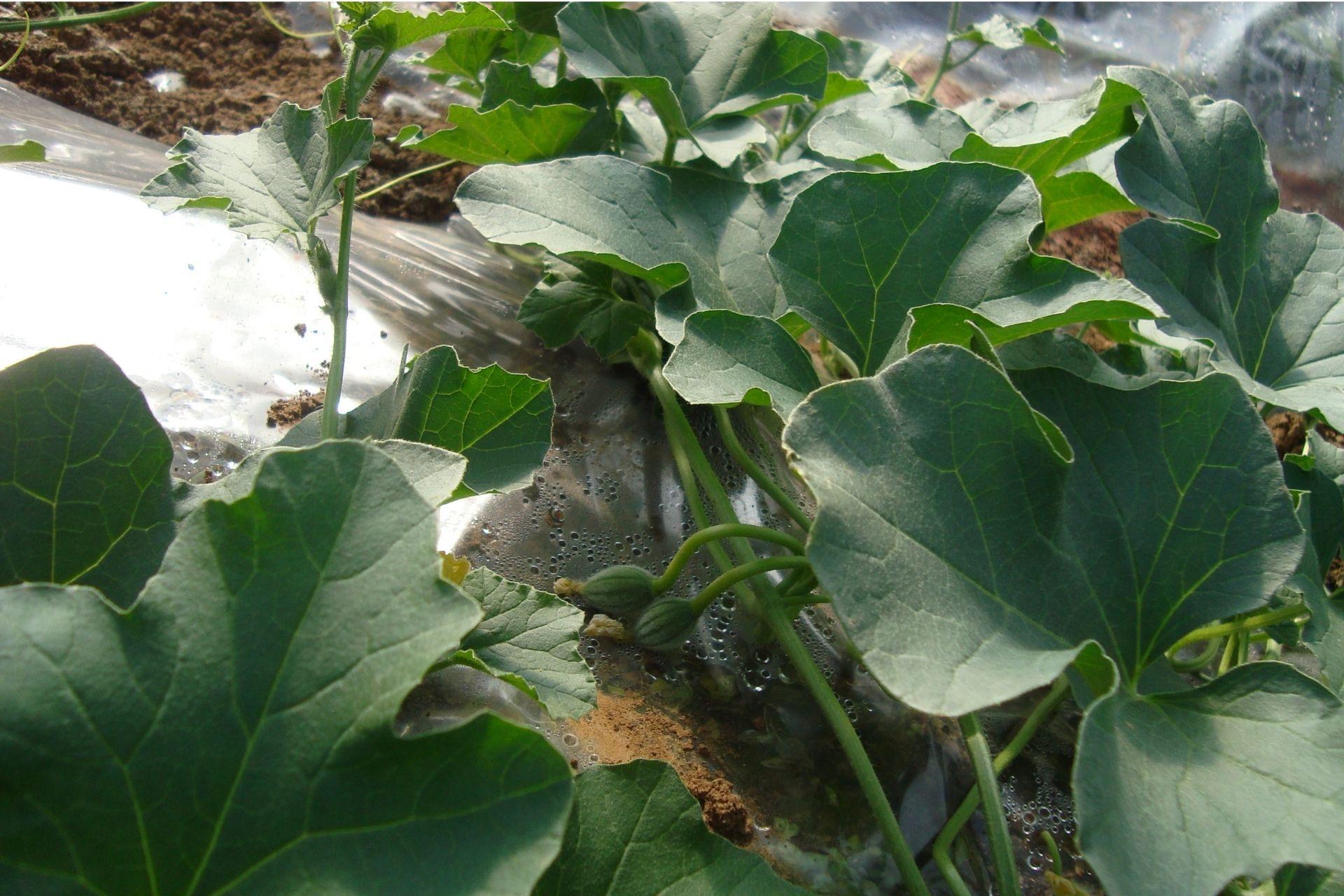
Healthy melon crop treated with BioAksxter®
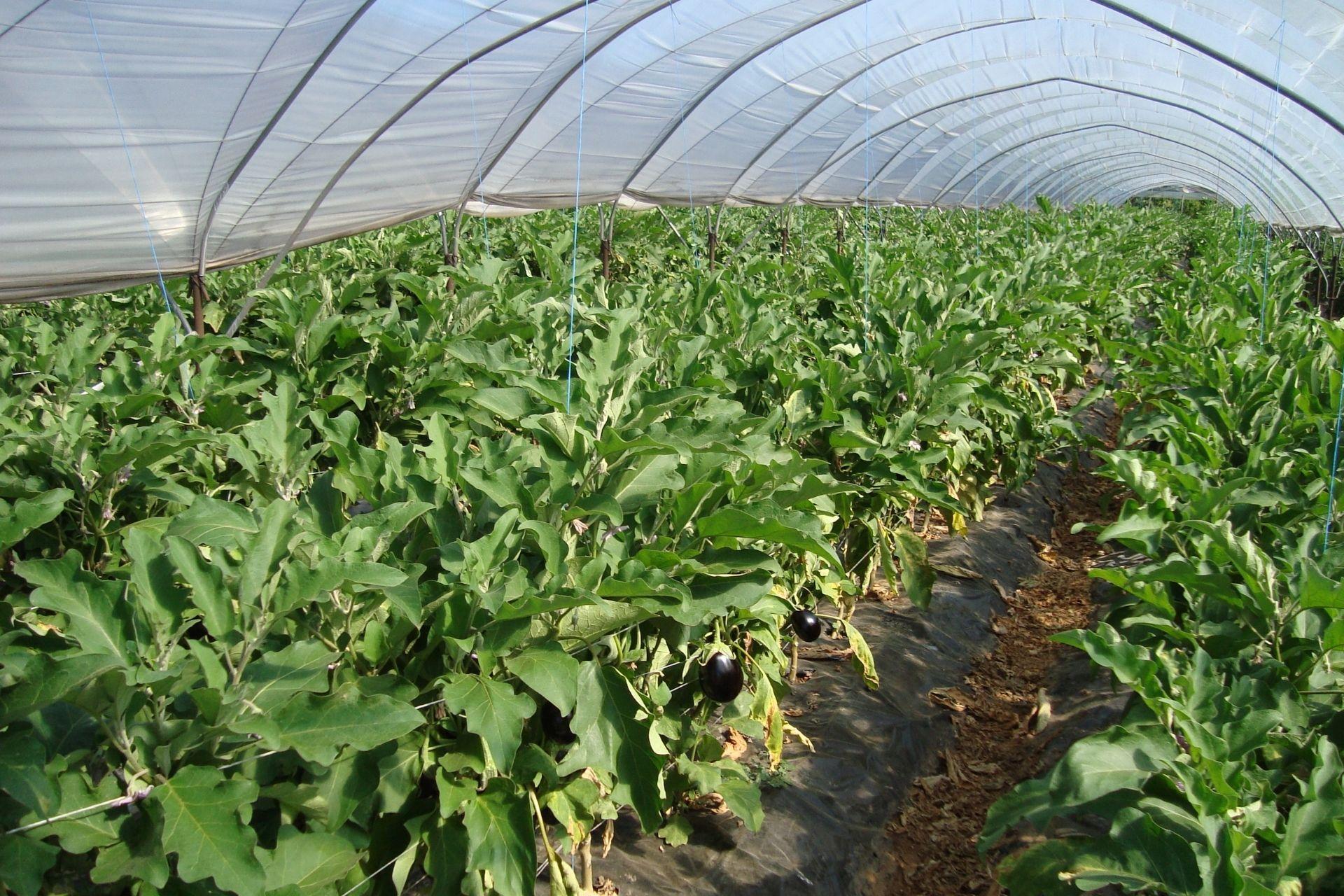
Aubergine crop treated with BioAksxter®
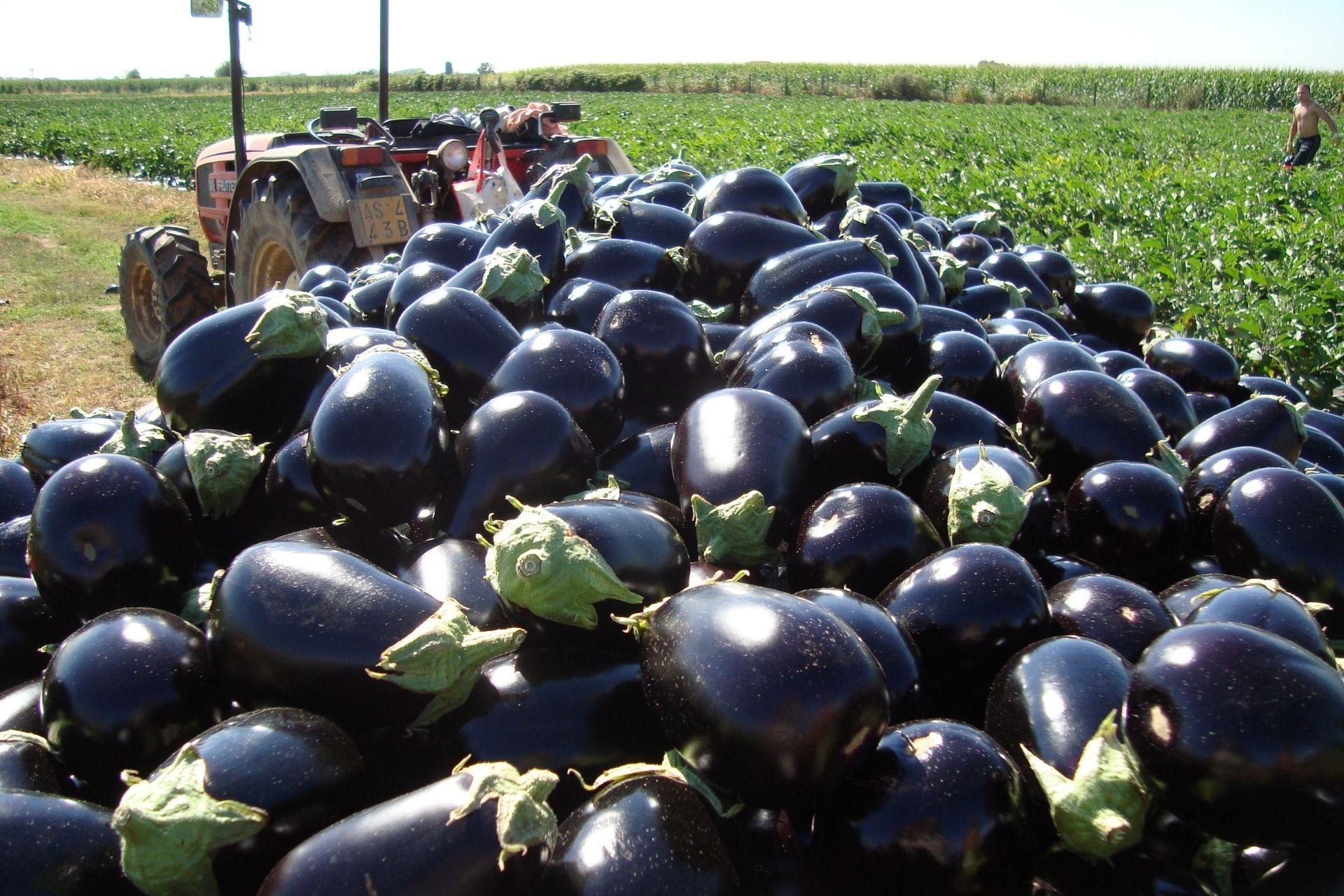
Aubergines treated with BioAksxter®
